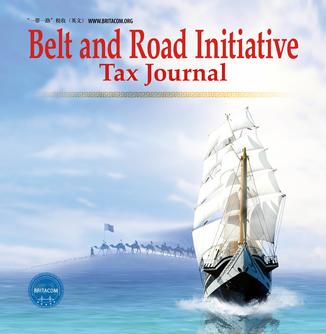Foreign tourists take a shuttle bus at Tianjin International Cruise Home Port to visit Huangyaguan section of the Great Wall in north China's Tianjin Municipality, Feb. 25, 2025. (Xinhua/Sun Fanyue)
BEIJING, April 17 (Xinhua) -- China's coastal cities are witnessing a renewed wave of international cruise tourism, fueled by relaxed visa policies and improved accessibility for foreign travelers.
Shanghai's Wusongkou International Cruise Terminal is at the forefront of this revival, which recorded 78 cruise calls and more than 480,000 passenger visits in the first quarter of 2025 -- including nearly 30,000 international visits.
The numbers represent a sharp rise from the same period in 2024, when the terminal handled just 28 cruise calls and 192,000 passenger visits, with only 2,900 foreign visits.
The turnaround comes after China introduced a 15-day visa-free policy for international cruise tour groups in May 2024, along with streamlined transit and departure policies for eligible foreign cruise travelers.
These changes have made shore excursions more accessible for foreign travelers, injecting new momentum into China's post-pandemic inbound tourism market.
Compared with pre-pandemic levels, the growth showcased in Wusongkou is also pronounced. The 2025 figures marked a 44.44 percent increase in cruise calls and a 7.7 percent rise in total passenger volume over the same period in 2019. The number of foreign visits recovered to about 75 percent in 2019, reflecting a steady rise in international interest.
The terminal also set a new milestone on March 16, when it welcomed 4,800 international arrivals in a single day -- the highest daily volume of foreign cruise passengers since its opening in 2011.
Adding to the momentum, two major international liners -- AIDAstella and Mein Schiff 6 -- made their inaugural calls to Shanghai this year.
Mein Schiff 6 is scheduled to return to the terminal on April 19 to 20 with more than 2,000 passengers, about 90 percent of whom are from Germany and Nordic countries.
This booming cruise activity underscores China's broader effort to position itself as a global tourism hub with more open and traveler-friendly policies.
Since a landmark trial policy offering unilateral visa exemptions was launched in December 2023, China has expanded unilateral visa-free access to travelers from 38 countries, allowing stays of up to 30 days.
In late 2024, China further eased transit rules, permitting eligible travelers from 54 countries to enter through more ports visa-free and stay for up to 10 days en route to a third destination.
China has also made it easier for foreigners to travel and stay in the country, turning "China Travel" into a trending keyword on major online platforms.
Foreign visitors can now conveniently pay for goods and services using their phones by linking international credit cards to popular Chinese mobile payment apps like Alipay and WeChat Pay. They still benefit from a wide support network of nearly 70,000 bank branches, 320,000 ATMs, and numerous currency exchange facilities nationwide.
These measures are working. Since the 240-hour visa-free transit policy took effect in December 2024, Chinese ports have welcomed more than 9 million inbound foreign travelers -- a 40.2 percent increase year on year, according to data from the National Immigration Administration released on Tuesday. Of these, 6.57 million entered visa-free, accounting for over 71 percent of the total.
At Shanghai's Wusongkou terminal, foreign visitors arriving by cruise ship can access a one-stop service station offering currency exchange, SIM card purchases, and multilingual assistance from volunteers.
"Policies like the 240-hour visa-free transit have significantly boosted the appeal of cruise tourism," said Peng Zhaoyun from Shanghai Wusongkou International Cruise Terminal Development Co., Ltd. "A spontaneous trip to China has become a real option for international travelers."
Beyond Shanghai, other Chinese coastal cities are also seeing growth in cruise tourism.
In Xiamen, a city in east China's Fujian Province, five international cruise ships docked in the first quarter of 2025, bringing nearly 3,000 foreign passengers. More than 30 percent of those travelers exited China through other cities, reflecting growing cross-regional connectivity among cruise ports.
To improve efficiency, Xiamen's Gaoqi Border Inspection Station has rolled out several innovations, including "scattered clearance," allowing cruise tour groups to clear immigration in smaller, separate batches, and QR code-based simplified entry for homeport passengers.
These initiatives ensure that disembarking and immigration procedures now take as little as 10 minutes. Meanwhile, crew members who remain on board are no longer required to present entry and exit documents.
This year, three more international cruise calls are expected in Xiamen, contributing to the city's cruise economy and strengthening its ties with neighboring countries and regions.
In northern China, Tianjin International Cruise Home Port is also showing growth. The largest cruise home port in the region handled 105 international cruise calls and 357,400 inbound and outbound passenger trips in 2024. In the first half of 2025 alone, 90 cruise ship entries and exits are projected.
"Tianjin is committed to supporting the cruise tourism industry as a driver of economic growth," said Wang Changfeng, head of the Tianjin General Station of Exit and Entry Frontier Inspection. "We're deploying advanced inspection systems, improving customs clearance, and streamlining services to attract more international visitors."
The surge in foreign arrivals by cruise ships at ports across China reflects the growing global recognition of the country's commitment to high-level opening up, said Jiang Ruiqin, a local official overseeing urban infrastructure development in Shanghai.
"The cruise economy isn't just a driver of premium consumption -- it's also a vital platform for global exchanges," he noted.




 A single purchase
A single purchase









